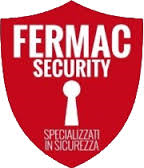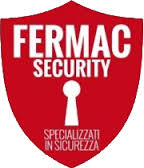For more information on how Sage uses and looks after your personal data and the data protection rights you have, please read our Privacy Policy. This includes revenue from donations, membership dues, program fees, grants, and other sources. On the balance sheet, grants are What is Legal E-Billing usually included as deferred income and are then shown on the profit and loss statement. These can change between grant cycles, as funders are likely to respond to their efficacy in the previous grant cycle. This is made even more challenging by the time constraints that many nonprofits operate under. Grants should be recognized in profit or loss systematically over the periods that the related costs or expenses occur.
- Next, establish clear record-keeping protocols for all grant-related financial transactions.
- The choice between GAAP and IFRS grant accounting standards embodies more than mere compliance; it reflects strategic decisions about how a nonprofit recognizes revenue and communicates its financial health.
- There are a few things to keep in mind when understanding the requirements of a grant and what accounting methods are allowed.
- The field of grant accounting is constantly evolving to reflect changes in regulations and best practices.
Deciphering Grant Accounting Techniques in Nonprofits
This includes documenting the source of funds, the purpose of each expenditure, the date and amount of the transaction, and any other pertinent details. Allocate these costs fairly among all projects, based on a fixed percentage of total project costs or another equitable distribution method approved by the grant provider. However, with a clear understanding and effective tools, you’ll find it simple in no time. These challenges can include calculating the correct amount, ensuring accuracy, and meeting reporting deadlines. Government grants can be recorded under the Income approach since the grant revenue does not have to be paid back.
What is revenue recognition for a nonprofit organization?
This step-by-step guide helps you avoid costly mistakes, ensuring your events are well-planned, impactful, and deliver a strong return on investment while celebrating your organization’s community impact. Looking ahead, we can expect continued technological advancements to yield even more sophisticated tools for efficient and transparent grant accounting and management. Its relevance lies in its ability to provide real-time insights into how funds are being spent and whether expenses align with the budget.
Use the grant in a manner that complies with all applicable laws and regulations
The importance of a dedicated system lies in its ability to provide a real-time overview of financial performance across multiple grants, ensuring that funds are being used appropriately and within budget constraints. Grant accounting, an often overlooked but vital aspect of financial management, forms the backbone of any project powered by grants. Health and safety concerns are minimal, given the office-based nature of the work, with ergonomic considerations taken into account to ensure a comfortable working environment. Technology plays a central role, streamlining processes and enhancing accuracy in financial reporting.
Accounting Tips on Grant Management for Nonprofits
Nonprofit grant accounting software emerges as an indispensable ally for organizations navigating the complexities of grant management. This specialized tool is ingeniously crafted to address the unique fiscal and regulatory challenges faced by nonprofits, particularly those related to grant funding. By leveraging the capabilities of such software, nonprofits can achieve unprecedented levels of efficiency, accuracy, and compliance in their financial operations. Relying on Excel or similar spreadsheet software for financial management can be appealing for its familiarity and initial simplicity. They lack the advanced security features, scalability, and error-minimizing capabilities of specialized accounting software.
- Loans provide financial flexibility but require a commitment to repayment, underpinned by the borrower’s financial health.
- Clear and consistent cost allocation methods are critical to ensuring that financial reporting accurately reflects the use of grant funds in compliance with donor restrictions and regulatory requirements.
- To begin setting up your financial tracking system, it’s essential to identify and categorize all grant-related expenses.
- Grants can be given for a variety of reasons, such as energy efficiency or renewable energy projects.
Engaging with Rooled to Explore Grant Opportunities
As the grant accountant, you are responsible for preparing forecasts and resolving accounting issues. You prepare invoices and requests for payments to funding agencies and reconcile grant expenses. You identify issues relating to the grants and communicate with the grant compliance manager and program officers. For accurate management of grants for nonprofits, grants must be treated as income and matched with related costs in the same period. It is important to be fully transparent with grant organizations about your accounting practices before acquiring any grants.
Cost allocation problems
Unrestricted funds provide organizations with the flexibility to allocate resources as they see fit, without specific constraints imposed by the donor. This type of funding is valuable as it allows organizations to address immediate needs, cover operational expenses, or invest in strategic initiatives. Despite the lack of restrictions, it is still important for organizations to manage these funds responsibly. Transparent reporting and accountability are crucial to maintaining donor trust and securing future funding. Organizations should implement robust financial management practices to ensure that unrestricted funds are used effectively and align with the organization’s overall mission and goals.
Scholarship grants
For instance, a nonprofit managing a community development grant provides detailed expenditure reports, reinforcing trust and integrity in its operations. This clear financial stewardship solidifies the nonprofit’s reputation as a reliable and responsible entity. The cornerstone of prudent financial management within nonprofits revolves around forward-looking budgeting and strategic planning.
Optimizing Nonprofit Financial Management with Strategic Grant Accounting Approaches
Stay tuned as we explore more grant types and their implications in our journey through the world of grant accounting. Adopting specialized nonprofit accounting software transcends the capabilities of basic spreadsheets or generic accounting solutions, offering features tailored to the unique needs of nonprofits. These tools are designed to produce GAAP-compliant financial statements, differentiate between restricted and unrestricted funds, and streamline budgeting and expenditure tracking. With the right software, nonprofits can enhance accuracy, improve record-keeping, and generate detailed financial reports with ease, supporting better grant management and compliance. Effective grant accounting embeds robust financial management practices within the organization. By maintaining accurate, up-to-date records, nonprofits can monitor their financial health, track grant utilization, and ensure resources are allocated efficiently.


